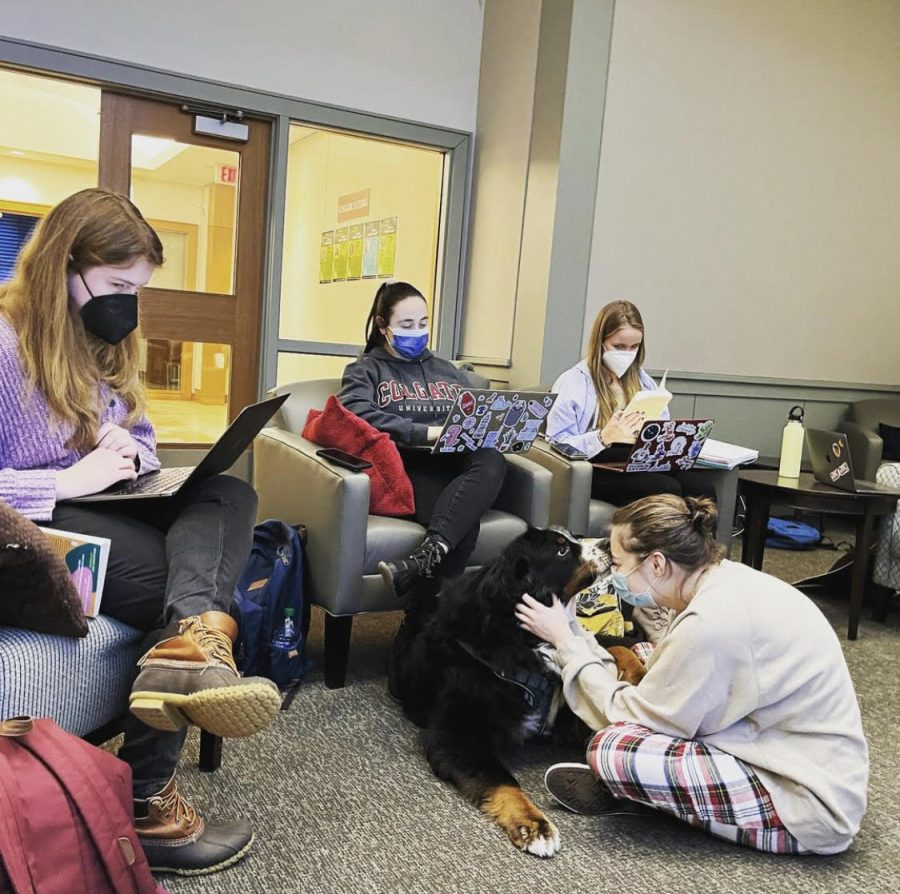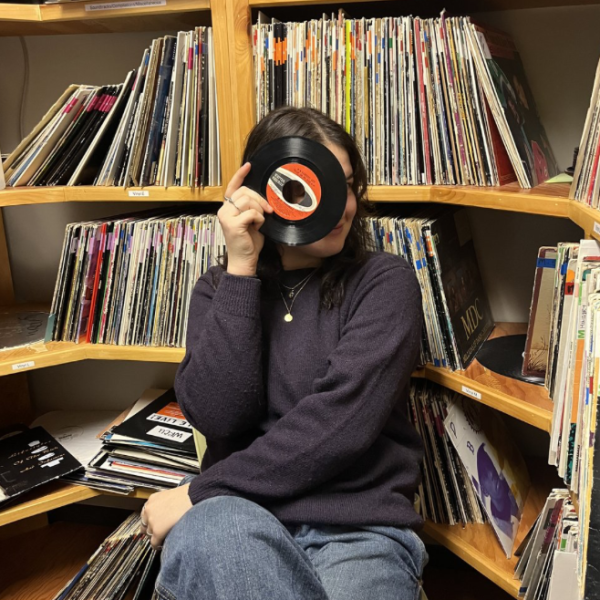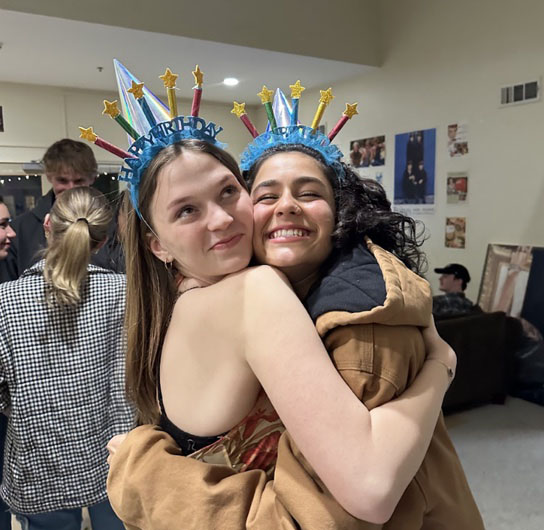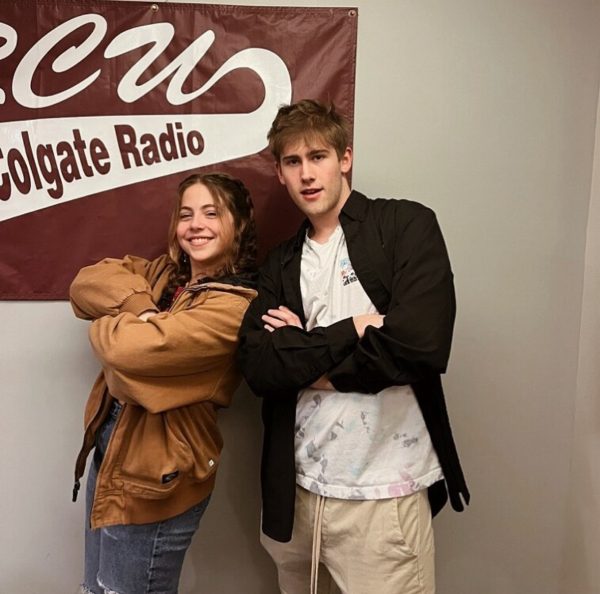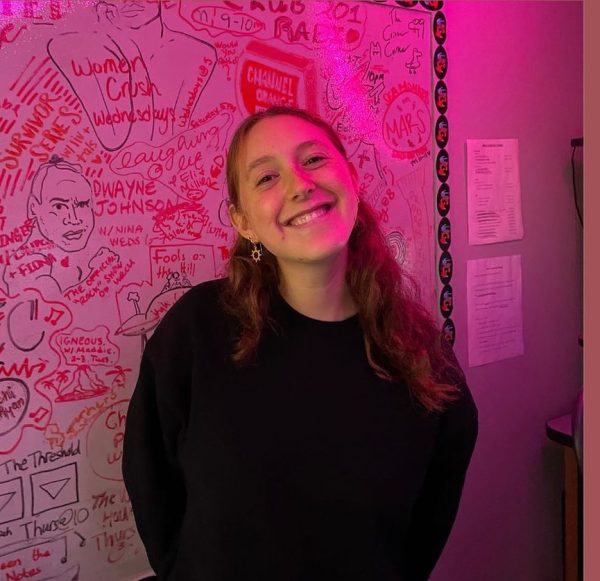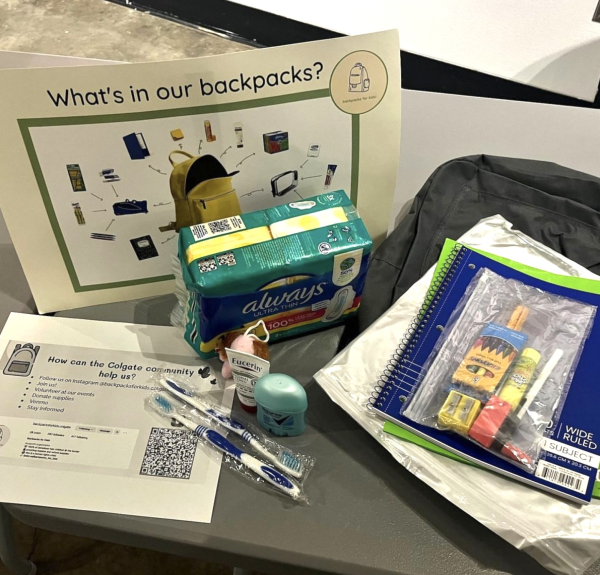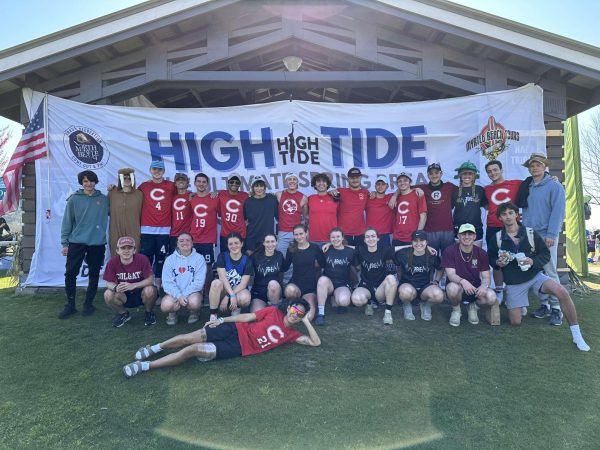Literary Leaders: Filling the Creative Gap
Both the recently revived Colgate Portfolio magazine and The Write-In, a club for creative writers, share a firm mission: establish community around creative literature and art.
Junior Marissa Bordonaro, the current editor of Portfolio, came to Colgate with a fair bit of publishing experience under her belt. She served as an editor for her high school’s literary magazine, where the editors received upwards of 200-250 submissions every semester.
Unfortunately, Bordonaro’s first year at Colgate was disrupted by the COVID-19 pandemic, meaning that many student organizations faded out of the picture along with a sense of normalcy. There was no in-person club fair in 2020, and some students found it harder to find communities to join. Bordonaro’s attempts to get involved with Portfolio fell on deaf ears, as she never heard back from the former editors after reaching out. While Bordonaro recalled that maybe one edition was published during her first year, Portfolio entirely vanished her sophomore year.
“I had kind of gotten fed up with the fact that there wasn’t a creative outlet for creative people on campus. So, I just kind of walked into CLSI [Colgate Office of Student Involvement]. And I was like, ‘Hey, does anyone know if Portfolio is a thing anymore?’” Bordonaro explained. “Leigh-Ann [Wenzel] [of CLSI] said it hadn’t been registered, and she said, ‘Do you want it?,’ and I said, ‘Absolutely.’”
Since then, Bordonaro has taken major strides in forming a community of literary lovers and publishing a comprehensive magazine.
“I am kind of trying to revamp [Portfolio] a little bit. I know there were some issues in the past where people felt like it was a little too exclusive. It was, like, three people doing everything and there was no way for anyone else to get involved beyond submitting,” Bordonaro said. “People were also complaining that it was also kind of getting forced into an aesthetic and I […] want it to be a little bit more inclusive.”
Bordonaro wants to provide a space for fellow students to flourish and find belonging, especially given Colgate’s physical remoteness. Bordonaro doesn’t work alone to publish Colgate’s only student-run literary and art magazine that dates back to 1989. The magazine is divided into sections of poetry, prose, art and non-fiction, and lead editors generally oversee each one, with assistant editors working underneath them. These individuals put their heads together on a bi-weekly basis, workshopping submissions and deciding which pieces should go in the final copy of the magazine. With the help of the team, Bordonaro hopes to publish once a semester.
“I think my favorite part about [Portfolio] is just kind of working with other people, just to make something. I’ve been talking a lot to our lead editors about how their process works, because I’m going to rely on them a lot to actually go through submissions and edit them. But, I think the most fun part has really just been working with them trying to figure it out, and talking to professors— some of the professors on campus are super invested in this,” Bordonaro said. “There’s certainly no lack of talent on this campus, people are incredible. Like, I’ve been in creative writing workshops, and people write some really crazy stuff, and the same thing with art. You know, I feel like art is something that a lot of people do just kind of on the side […] so I feel like if people wanted to share that, they should be able to.”
Another literary leader creating writing communities is Professor of English CJ Hauser. Since coming to Colgate in 2016, Hauser has been connecting student writers through her extensive work in the English department, but also through The Write-In: a weekly meeting where creative people come together, talk about whatever they’re writing and actually write. When Hauser first arrived at Colgate, like Bordonaro, she immediately noticed there was a hole where a creative community could be.
“I started at Colgate in fall 2016, and one of the first things I was trying to learn about [was] the community here. We had the senior exit interviews from graduating English [concentrators], and [at] my first department meeting we were talking about them. And the thing that all of the students said, again and again, was that they wanted a stronger sense of community with other English majors and other creative people,” Hauser said.
From there, Hauser started to meet students through her classes who were interested in cool and creative things, and simply created a space for them to meet and work together.
“So the idea was to have a weekly meetup, where people could come and meet other people who are doing creative stuff. And that also if people who weren’t in creative writing workshops, but wanted to keep writing in their lives, it’s a place to do that […] So yeah, we meet once a week, fluctuating, and I make tea. The teapot is the emotional support tea pot, it has been named by former students,” said Hauser. “[So] the emotional support teapot comes, there are snacks, my dog comes and distracts everyone, and we go around and we check in with our reading and writing goals.”
After the initial chit chat and tea, the writing begins. Rather than an intense workshop with strict guidelines, the environment is relaxed and open for writers to work at their own pace.
“Then I have a prompt. No one ever does the prompt, but I offer a prompt. And then we write, and then at the end we come back and share what we’ve written if people want to, and then we wash dishes and go home. It’s very simple,” explained Hauser.
The Write-In meets on Tuesdays from 5 p.m. to 6:15 p.m. in the lounge on the third floor of Lathrop Hall. Hauser stressed just how open the Write-In is. Anyone is welcome to just stop by, check out what’s going on and pet Moriarty, Hauser’s Bernese Mountain dog. It’s not just for students, either— truly anyone is welcome.
Senior Giorgio Rahal is one of the regular students in Hauser’s club and reflected on his experience with the meetings.
“[The Write-In] is a great space for keeping writing alive on campus. Everyone comes. We share what we’re working on, what we’re reading and what we’re generally interested in. It’s pretty inspirational, because everyone is always talking about something interesting,” Rahal said.
Between Hauser and Bordonaro, the writing community at Colgate is in good hands. With such devoted members of the community, their fervency does not look to be slowing down anytime soon.


